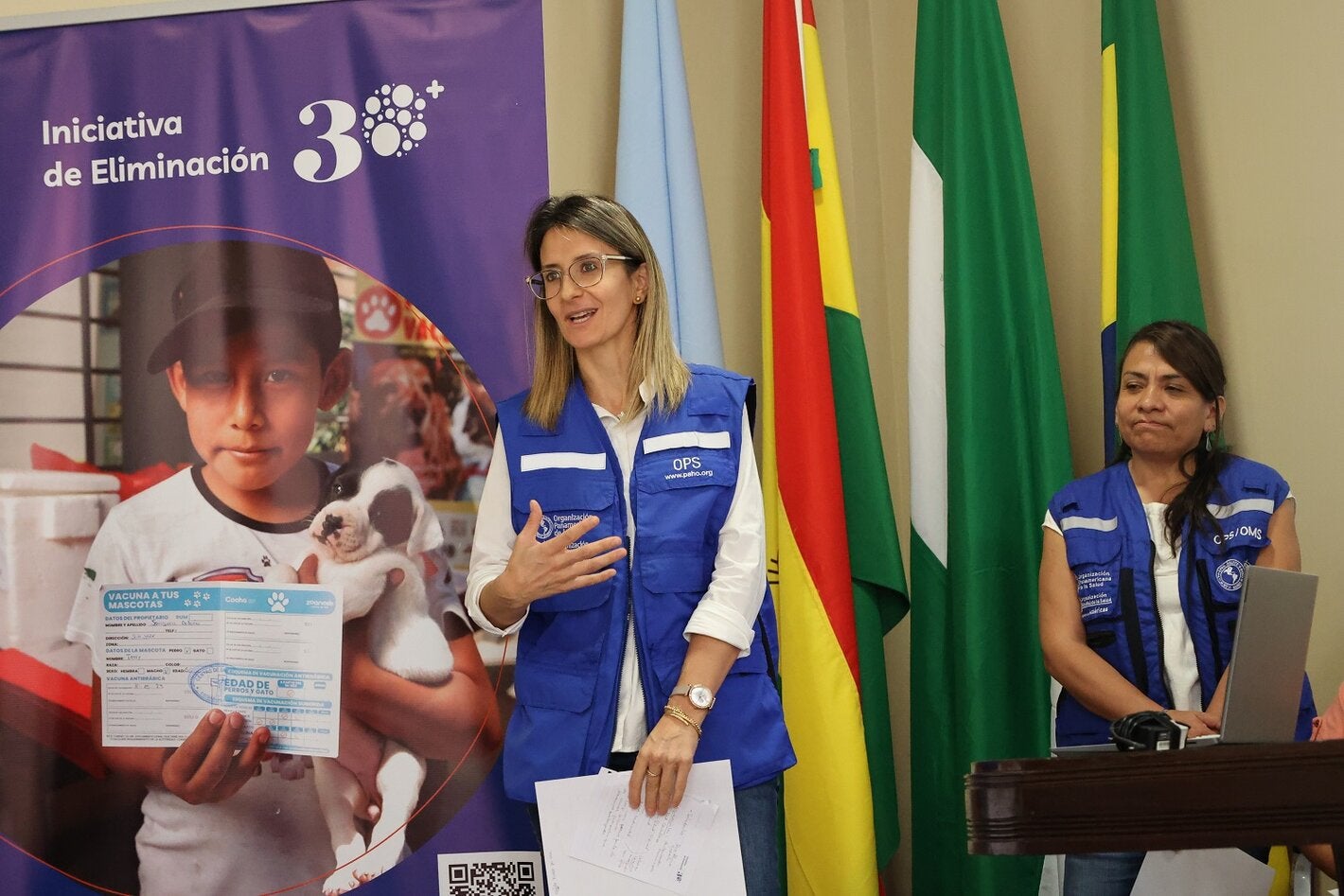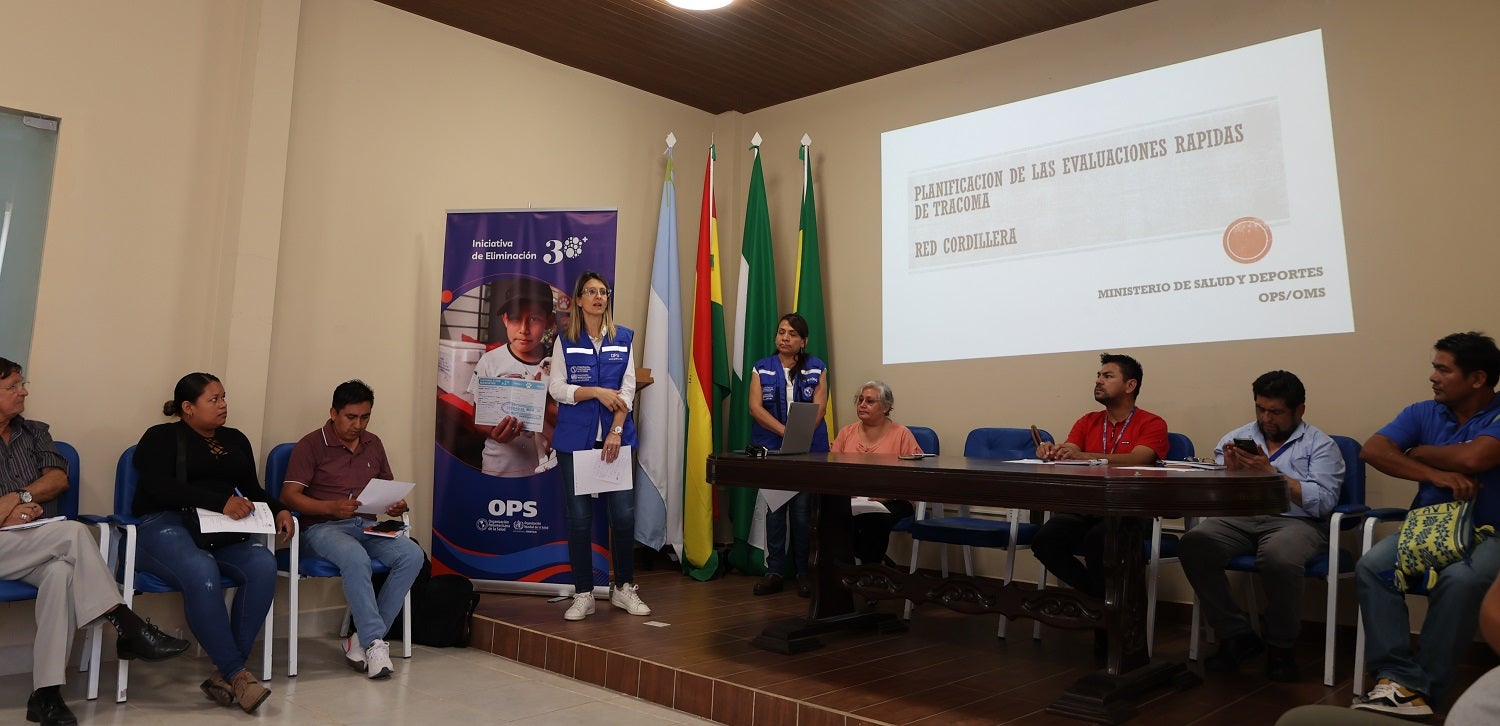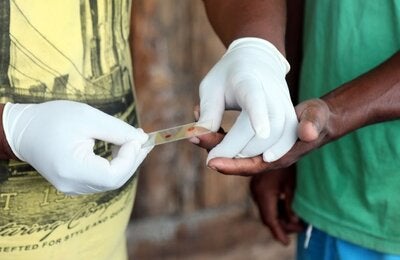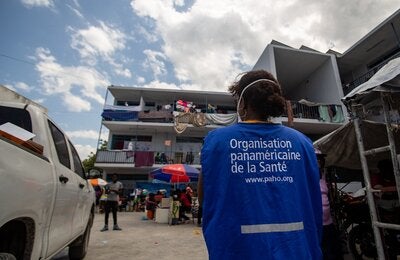
February 16, 2024 (PAHO) - Bolivia initiates the implementation of the project "Improved health of communities, women, and children through the elimination of trachoma as a public health problem in the Americas." Its commencement is marked by a coordination meeting of local stakeholders for the development of rapid trachoma assessments in the Cordillera Network of the Santa Cruz department.
This project is part of the cooperation agreement between the Pan American Health Organization (PAHO) and the Department of Global Affairs Canada (GAC) of the Government of Canada. In the country, the Ministry of Health and Sports leads the implementation of the project. In the region, the objective of the project, to be executed until 2028, is to achieve the elimination of trachoma as a public health problem in the Americas.
Sandra Herrera, the manager of the Cordillera Network, explained that the first coordination meeting succeeded in drafting the action plan for the development of rapid trachoma assessments and reached agreements for the development of comprehensive health brigades in Iyovi and Paja Colorada in the Bolivian Chaco region.
Angel Sinuiri from the Ministry of Health and Sports' Eye Health Program announced that along with the rapid trachoma assessment brigades in the designated territory of Chaco, comprehensive health care will be provided, including the identification of ocular health problems in general.
On his part, Diego Noriega, representing the Traditional Medicine Directorate, emphasized the importance of involving traditional healers from Guarani communities in the training sessions that will be conducted for trachoma detection.
Trachoma is one of the oldest diseases known to humanity and is the leading infectious cause of blindness worldwide. It is endemic in many rural, poor, and remote areas in countries across Central and South America, Africa, Asia, Australia, and the Middle East.
María Jesús Sánchez, the Communicable Diseases Advisor at PAHO/WHO, stated that the goal is to assess the presence or absence of trachomatous trichiasis (inward-turning eyelashes that rub against the cornea, known as trichiasis) in adults and the prevalence of active trachoma among children aged 1 to 9 years.
The coordination meeting with the Cordillera Network involved participation from the Iyovi and Paja Colorada Health Centers, representatives from the Indigenous Autonomous Governments Kereimba Iyambae and Charagua Iyambae, Guarani Captains: Gran Kaipependi Karovaicho and Bajo Isoso, members of the General Directorate of Traditional Medicine, the Eye Health Program, the Juana Azurduy de Padilla Bonus Program, the Telehealth Program, Community and Intercultural Family Health Doctors, Health Promotion of the Ministry of Health and Sports Bolivia, along with experts from the Pan American Health Organization/World Health Organization (PAHO/WHO).
In Latin America, trachoma is officially recognized as a public health problem in Brazil, Colombia, Guatemala, and Peru, with nearly 5.6 million people living in areas that require interventions to eliminate the disease as a public health issue.
In Brazil, Colombia, and Peru, the main affected populations are indigenous peoples in the Amazon basin, particularly women and children. In 2017, Mexico was validated by WHO for having eliminated trachoma as a public health problem, becoming the first country in the Region to achieve this goal.
However, there are other countries in the region, such as Bolivia, that need to implement trachoma surveillance and collect evidence to demonstrate and declare trachoma elimination throughout the region, not just in some countries.









